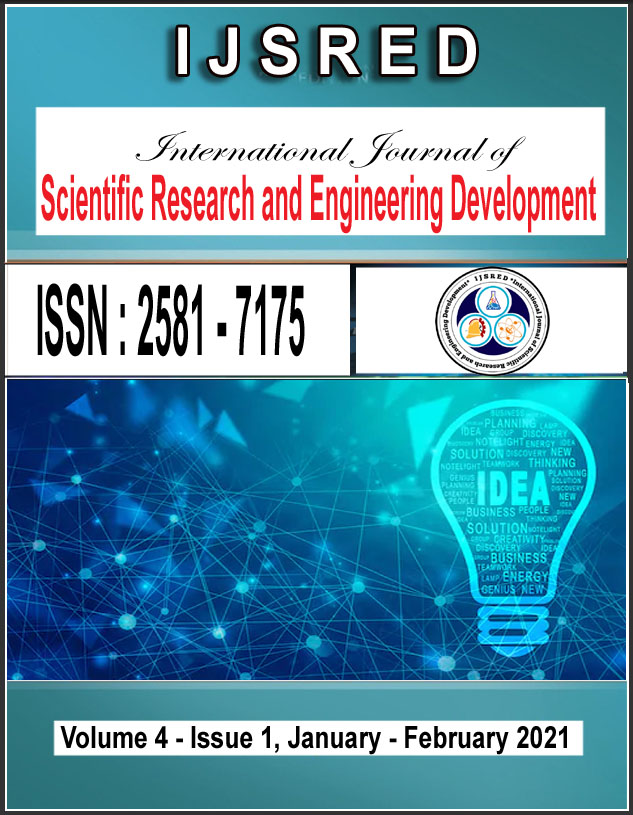 |
International Journal of Scientific Research and Engineering Development( International Peer Reviewed Open Access Journal ) ISSN [ Online ] : 2581 - 7175 |

Three Dimensional CFD Simulations of Two Row Plain Fin and Tube and Heat Exchanger
 |
International Journal of Scientific Research and Engineering Development (IJSRED) | |
| Published Issue : Volume-4 Issue-1 | ||
| Year of Publication : 2021 | ||
| Unique Identification Number : IJSRED-V4I1P48 | ||
| Authors : Rahul Singh, Amol Tripathi | ||
Abstract :
Three-dimensional CFD recreations are done to research heat move and liquid stream attributes of a two-line plain balance and-cylinder heat exchanger utilizing ANSYS FLUENT. Warmth move and pressing factor drop qualities of the warmth exchanger are examined for Reynolds numbers going from 330 to 7200. Model math is made, fit, determined, and post-handled utilizing ANSYS Workbench. Liquid stream and warmth move are recreated and results thought about utilizing both laminar and fierce stream models (k-epsilon, and SST k-omega), with consistent state solvers to ascertain pressure drop, stream, and temperature fields. Model approval is done by looking at the recreated case contact factor f and Colburn j factor with trial results from the writing. For erosion factor assurance, little distinction is found between the stream models reenacting laminar stream, while in momentary stream, the laminar stream model delivered the most exact outcomes and the k-omega SST disturbance model was more precise in fierce stream systems. The aftereffects of reproductions for heat move in laminar stream utilizing the laminar stream model are discovered to be in acceptable concurrence with the test results, while heat move in temporary stream is best addressed with the SST k-omega choppiness model, and warmth move in tempestuous stream is all the more precisely reenacted with the k-epsilon disturbance model. Sensible arrangement is found between the reproductions and trial information, and the ANSYS FLUENT programming has been adequate for mimicking the stream fields in cylinder blade heat exchangers.
